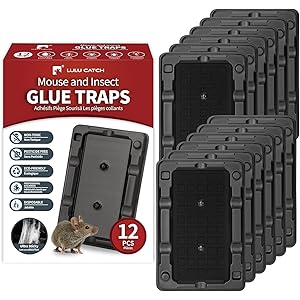As an avid gardener and DIY enthusiast, I have faced my fair share of challenges with garden hoses. Whether it’s a pesky leak, a stubborn kink, or a frayed end, these problems can be frustrating and often lead to wasted time and water. Over the years, I’ve learned a variety of techniques to fix these issues effectively. In this article, I’ll share my personal experiences, practical tips, and tricks I’ve discovered along the way. Let’s dive into the best ways to fix your garden hose and keep it in great condition!
Understanding Common Garden Hose Issues
Before we get into the fixes, it’s essential to understand the common problems that garden hoses face. By identifying the issue, you can choose the right solution. Here are some of the most frequent issues:
- Leaks: These can occur at any point along the hose or at the fittings.
- Kinks: A kink in the hose can restrict water flow and lead to damaged areas.
- Frayed Ends: Over time, the ends of the hose can become worn out, leading to leaks.
- Clogs: Debris can build up inside the hose, affecting water pressure.
- Cracks and Holes: These can occur due to exposure to elements or physical wear and tear.
Tools You’ll Need for Repairs
Having the right tools on hand makes the repair process much easier. Here’s what I typically use:
- Scissors or a utility knife
- Hose repair kit (includes connectors and clamps)
- Waterproof tape (like duct tape or electrical tape)
- Sandpaper (for smoothing rough edges)
- Bucket (to catch any residual water)
Fixing Leaks in Your Garden Hose
One of the most common problems with garden hoses is leaks. Here’s how to effectively tackle this issue:
Identifying the Leak
First, you need to locate the leak. Turn on the water and inspect the hose carefully. I usually run my hand along the length of the hose to feel for moisture. It’s crucial to check the hose fittings as well, as leaks often occur at these junctions.
Using a Hose Repair Kit
Once you’ve located the leak, you can use a hose repair kit. Here’s a quick guide:
- Cut out the damaged section of the hose using scissors or a utility knife.
- Install the connector from the hose repair kit into both ends of the hose.
- Secure the connection with the provided clamps.
- Test the hose by turning on the water to ensure there are no leaks.
Using Waterproof Tape
If the leak is small, I sometimes opt for waterproof tape as a quick fix. Here’s how:
- Dry the area around the leak thoroughly.
- Wrap the tape around the leak, overlapping as you go.
- Press down firmly to ensure a good seal.
- Test the hose to see if the leak persists.
Dealing with Kinks
Kinks can be incredibly annoying, as they not only disrupt water flow but can also damage the hose over time. Here’s how to manage this issue:
Avoiding Kinks
Prevention is the best cure. Here are a few tips I follow to avoid kinks:
- Always unwind the hose completely before use.
- Avoid dragging the hose over rough surfaces.
- Store the hose on a reel or a hose cart when not in use.
Fixing Existing Kinks
If you find yourself with a kinked hose, here’s what you can do:
- Gently work the kink out by hand.
- If the kink is stubborn, run hot water over the kinked area to soften the material.
- Once the kink is removed, lay the hose flat for a while to prevent it from re-kinking.
Repairing Frayed Ends
Frayed ends can lead to leaks and should be addressed promptly. Here’s how I handle this situation:
Cutting the Hose
The first step is to cut off the frayed section. Here’s the process:
- Using scissors or a utility knife, cut the hose straight across just above the frayed area.
- Use sandpaper to smooth the cut edge, making it easier to attach a new connector.
Installing a New Connector
Once you have a clean cut, it’s time to install a new connector:
- Insert the connector into the end of the hose.
- Secure it with a hose clamp or crimping tool, if necessary.
- Test the connection by turning on the water.
Clearing Clogs
Clogs can be a real nuisance, affecting the water pressure and flow. Here’s how to clear them effectively:
Flush the Hose
The first step is to flush the hose out:
- Connect the hose to the faucet and turn the water on full blast.
- Let the water run for a few minutes to push out any debris.
Using a Snake or Coat Hanger
If flushing doesn’t work, I sometimes use a plumbing snake or a straightened coat hanger:
- Insert the snake or coat hanger into the hose.
- Gently push it through to dislodge any clog.
- Flush the hose again to remove any loosened debris.
Fixing Cracks and Holes
Cracks and holes can lead to significant leaks. Here’s how I tackle these issues:
Using Duct Tape
For small cracks or holes, duct tape can be a quick fix:
- Clean the area around the crack or hole.
- Wrap duct tape around the affected area, overlapping it for a good seal.
- Test the hose to ensure the leak is sealed.
Using a Hose Connector
For larger cracks or holes, it’s best to cut out the damaged section and replace it with a connector:
- Cut out the damaged section as mentioned earlier.
- Insert a hose connector and secure it with clamps.
Preventive Maintenance for Your Garden Hose
Prevention is key to prolonging the life of your garden hose. Here are some tips I follow:
- Store your hose indoors during extreme weather conditions.
- Regularly inspect for leaks and damage.
- Use hose reels or carts to prevent kinking.
- Flush the hose periodically to prevent clogs.
- Keep the hose away from sharp objects and rough surfaces.
Final Thoughts
Fixing a garden hose doesn’t have to be a daunting task. With the right tools and a little knowledge, you can tackle most common issues with ease. Remember, a little preventive maintenance goes a long way in prolonging the life of your garden hose. I encourage you to share your own experiences and tips in the comments below. Together, we can create a community of DIY gardeners ready to tackle any hose challenge!
FAQ
How often should I check my garden hose for damage?
I recommend checking your garden hose at least once a month during the growing season and more frequently if you use it often.
Can I fix a garden hose with tape?
Yes, waterproof tape can be an effective temporary fix for small leaks or cracks. For more significant damage, consider using a hose repair kit.
What’s the best way to store my garden hose?
The best way to store a garden hose is on a reel or cart, which helps prevent kinks and damage. If you don’t have one, try to coil it loosely and store it in a cool, dry place.
Can I use a garden hose in the winter?
It’s not advisable to use a garden hose in freezing temperatures, as the water inside can freeze and cause damage. Always drain the hose and store it indoors during winter.
If you found this article helpful, please consider signing up for our newsletter for more tips and tricks. Don’t forget to share this with your friends and on social media!
LULUCATCH Mouse & Insect Traps 12 Pack, Heavier Sticky Traps with Non-Toxic Glue for Small Mice & Insects. Sticky Mouse Traps Indoor, Easy to Set, Pet Safe Pest Control
$7.99 (as of 13/11/2025 03:49 GMT -03:00 - More infoProduct prices and availability are accurate as of the date/time indicated and are subject to change. Any price and availability information displayed on [relevant Amazon Site(s), as applicable] at the time of purchase will apply to the purchase of this product.)
Sign up for our newsletter and stay up to date with exclusive news
that can transform your routine!




